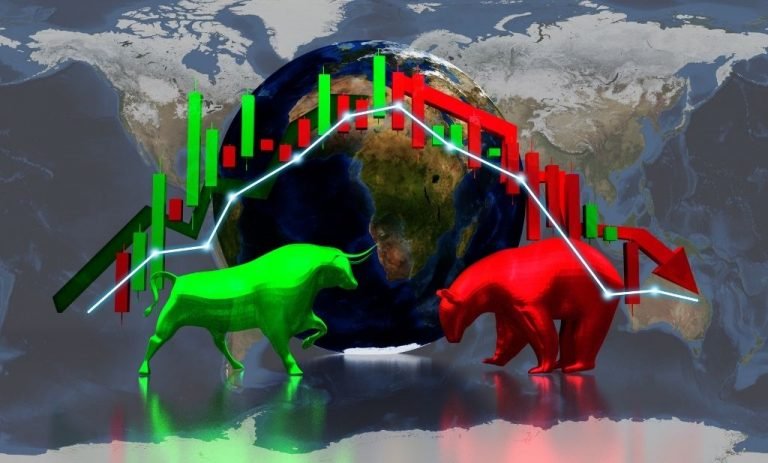How big is big enough?
Written by Sashi Reddy, Stewart Investors, Sustainable Funds Group

UY Scuti is one of the largest stars in the known universe. It is 1700 times the size of our Sun. Such large stars are rare but they grow in size quickly and have relatively short lifespans. When these stars run out of fuel, the gravitational pull of the dense core far exceeds the outward force from the nuclear fusion at the center. In a split second these mega stars explode in a spectacular fashion. The result is one of the biggest cosmic fireworks in the universe, called a Supernova.
The investment world also has a few super massive corporations today. The similarities with these large stars are striking. To many observers, much like the massive stars, such companies look wonderfully positioned with strong growth rates. What’s bubbling beneath this glowing surface, however, is usually a precarious balance between rising risks at the core and growth at the surface that likely will be incrementally harder to come by.
Facebook (Meta)*, Apple, Microsoft, Amazon and Google (Alphabet) are among the largest global companies by market capitalization and profits. Let’s call them FAMAG. FAMAG’s market capitalization equals approximately 40% of U.S. GDP and FAMAG generates about 15% of U.S. corporate profits [1]. However, FAMAG only pays 14% in taxes compared to the 21% corporate tax rate of the U.S [1]. Their profits have mostly benefitted a small set of shareholders, founders and management. Inequality in America has now surpassed even the gilded age of the late 1800s. Back then, 2% of the population owned a third of America’s wealth [2]. Today just the top 1% controls a similar share of America’s wealth [3].
FAMAG’s dominance is a result of admirable innovation, technology leadership and long-term vision. Taking a disproportionate share of wallet from customers and suppliers, acquiring competitors and making gargantuan buybacks has, in our view, helped power their growth. FAMAG spent US$473 billion buying back shares in the last five years [1].
Large stars and corporations are exceptions not the rule. Only a few grow beyond a certain size and they swallow anything that comes in their way. Between 2010 – 2019, FAMAG acquired 819 small companies that were below threshold reporting requirements [4]. Such acquisitions fly under the radar of regulatory scrutiny.
Each of these companies have platforms with more than a billion daily users. Microsoft has more than 75 million enterprise customers [5]. Amazon garnered over 40% of all e-commerce online retail sales in the US in 2020 [6]. Most businesses and individuals have little choice but to become or remain a customer, user or a supplier to these companies. This gives them more user data resulting in a virtuous circle, codified as “the network effect” in management lexicon. Data privacy and security is a huge challenge and regulators have barely scratched the surface in addressing this issue.
FAMAGs have become the engine rooms of society and not just the economy. The above data points in isolation might not pose a risk but viewed collectively should make any government nervous. It seems a question of when, not if, governments will act to check their power. Lina M. Kahn, recently appointed chair of the Federal Trade Commission (FTC) is keen to make the anti-trust framework relevant for the 21st century. It is early days but the intent and direction of travel seems clear.

China, meanwhile, has begun to act with an iron hand changing rules overnight. Democracies do not have that luxury nor should they. It is likely to be a slow burn of tedious regulation and increased scrutiny**. There is an outside chance these American Supernova companies will be broken up but that will require immense political will and bipartisan support in the U.S. It is difficult to know straight away if such break ups are good or bad for shareholders. Although, we are certain that most of the underlying businesses benefit from being part of these giants either through cross sell opportunities or the ability to endure losses for long periods. We do not have a crystal ball to predict how far regulators can or will go. However, there are enough signs that risks are rising and, we believe, it will be difficult mathematically, socially and politically for FAMAGs to continue growing in the coming decade the way they have in the last.
These predictions are not a figment of our imagination. History provides many clues. A technology revolution sparked America’s gilded age, in the late 1800s. A small number of companies grew rapidly in the span of a few decades monopolizing various parts of the U.S. economy. The anti-trust age started with the passage of the Sherman Antitrust Act in 18907. It culminated with the formation of the FTC in 1914, an independent regulator to protect consumer interests and promote competition. Many of the large corporations of the gilded age do not exist today but their fragments do.
Yet, without these supernovae, human development might have taken a different path. Most of the elements we use to run our daily lives come from the remnants of super massive stars. Large companies might fade away or explode but they leave their footprint in myriad ways for economies to thrive in the future. Many successful companies today were born from the fragments of the gilded age supercorporations.
Today’s technology giants have many admirable qualities. However, it is prudent to question their ongoing contribution to sustainable development. Their size, dominance and the concentration of power, information and wealth in the hands of so few does not bode well for broad-based development. These are net cash businesses, with strong cash flow growth and trading at reasonable valuations. A simple financial analysis might suggest FAMAGs could be attractive investments yet such analysis hides many of the risks outlined above.
Super massive stars like UY Scuti usually last no more than a few million years. A smaller star like our Sun will have a lifespan of 10 billion years growing steadily all the way before fading away without an explosion.
End
E-mail Insights@ESG.ie to subscribe to The ESG Factor Magazine.
References
1 Source: Capital IQ, October 2021.
2 Source: Tindall, George Brown and Shi, David E. (2012). America: A Narrative History (Brief Ninth Edition) (Vol. 2).
W. W. Norton & Company. ISBN 0393912671 p. 589
3 Source: Statistica Aug 2021
4 Source: Financial Times, Big tech companies snap up smaller rivals at record pace, 19 September 2021.
5 Source: Microsoft Blog, 2 years of digital transformation in 2 months, 30 April 2020.
6 Source: Digital Commerce 360: Amazon faces unprecedented perils even as its profits hot new highs. 21 October 2021.
7 The Sherman Antitrust Act is an antitrust law aimed at preserving free and unfettered competition as the rule of trade.
* For illustrative purposes only. Reference to the names of each company mentioned in this communication is merely for explaining the investment strategy and Stewart Investors does not necessarily maintain positions in such companies. Any fund or stock mentioned in this presentation does not constitute any offer or inducement to enter into any investment activity nor is it a recommendation to purchase or sell any security.
** Certain statements, estimates, and projections in this document may be forward-looking statements. These forward-looking statements are based upon First Sentier Investors’ current assumptions and beliefs, in light of currently available information, but involve known and unknown risks and uncertainties. Actual actions or results may differ materially from those discussed. Readers are cautioned not to place undue reliance on these forward- looking statements. There is no certainty that current conditions will last, and First Sentier Investors undertakes no obligation to correct, revise or update information herein, whether as a result of new information, future events or otherwise.
Disclaimer
This document has been prepared for general information purposes only and is intended to provide a summary of the subject matter covered. It does not purport to be comprehensive or to give advice. The views expressed are the views of the writer at the time of issue and may change over time. This is not an offer document, and does not constitute an offer, invitation, investment recommendation or inducement to distribute or purchase securities, shares, units or other interests or to enter into an investment agreement. No person should rely on the content and/or act on the basis of any matter contained in this document.
References to “we” or “us” are references to Stewart Investors. Stewart Investors is a trading name of First Sentier Investors (UK) Funds Limited and First Sentier Investors International IM Limited. First Sentier Investors entities referred to in this document are part of First Sentier Investors, a member of MUFG, a global financial group. First Sentier Investors includes a number of entities in different jurisdictions. MUFG and its subsidiaries do not guarantee the performance of any investment or entity referred to in this document or the repayment of capital. Any investments referred to are not deposits or other liabilities of MUFG or its subsidiaries, and are subject to investment risk including loss of income and capital invested.
Past performance is not a reliable indicator of future results. Reference to specific securities (if any) is included for the purpose of illustration only and should not be construed as a recommendation to buy or sell. Reference to the names of any company is merely to explain the investment strategy and should not be construed as investment advice or a recommendation to invest in any of those companies.
